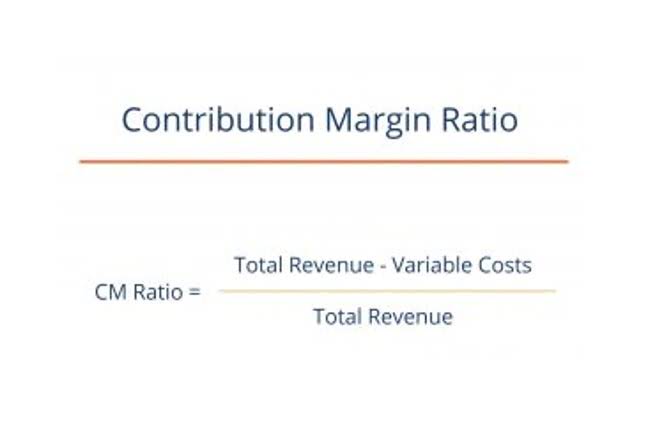
Be aware that taxes are included at the bottom of a company’s income statement, so taxes are excluded when calculating gross profit or operating profit. Gross margin is the percentage of a company’s revenue that’s retained after direct expenses such as labor and materials have been subtracted. It’s an important profitability measure that looks at a company’s gross profit as compared to its revenue. If you combine your company’s revenue growth rate and profit margin, you should get at least 40%. Businesses that equal or exceed this percentage are growing at a healthy rate, while those below 40% may face cash flow or liquidity issues. It’s something most investors use before they decide to put their money into a startup.
What Is a Good Gross Profit Margin?
- This profitability ratio evaluates the strength of a company’s sales performance in relation to production costs.
- Profit margin is one of the simplest and most widely used financial ratios in corporate finance.
- It excludes indirect fixed costs, e.g., office expenses, rent, and administrative costs.
- Be aware that taxes are included at the bottom of a company’s income statement, so taxes are excluded when calculating gross profit or operating profit.
- Its gross margin rate would be 40% (($1 million – $600,000)/$1 million).
- Your clients can upgrade their subscriptions and add new features that elevate their experience.
The likely scenario is that short-sellers are repositioning at the new highs consistent with the top of a trading range and a critical target for resistance. That target coincides with the lower boundary of the price gap formed in February when the company warned growth at scale was challenging. Many of you may find tracking SaaS metrics stressful, as you may not know which ones to focus on. In the agriculture industry, particularly the European Union, Standard Gross Margin is used to assess farm profitability.
- The gross margin is the portion of revenue a company maintains after deducting the costs of producing its goods or services, expressed as a percentage.
- The value of net sales is calculated as the sales minus returns inwards.
- By negotiating better deals with suppliers, it can reduce its COGS, increasing gross margin without affecting product quality.
- Gross profit is determined by subtracting the cost of goods sold from revenue.
- The major difference between the two calculations is that gross profit margin (or the gross margin ratio) concentrates exclusively on profitability from sales alone.
- In this article, we’ll dive into the definition, examples, formula, and how to calculate gross margin effectively—ultimately helping you unlock your company’s true earning potential.
How to Calculate Gross Margin
They will tell you the same basic relationship of revenues to costs but expressed in different ways. Banks and investors may ask to see net profits to demonstrate that your company can successfully generate a profit after all costs are accounted for. GM had a low margin and wasn’t making much money one each car they were producing, but GM was profitable. In other words, gross margin accounting GM was making more money financing cars like a bank than they were producing cars like a manufacturer. Investors want to know how healthy the core business activities are to gauge the quality of the company. The concept of GP is particularly important to cost accountants and management because it allows them to create budgets and forecast future activities.
Improving Gross Profit
The gross margin measures the percentage of revenue a company retains after deducting the cost of goods sold (COGS). It can impact a company’s bottom line and means there are areas that can be improved. Gross profit margin is a financial metric analysts use to assess a company’s financial health. It is the profit remaining after subtracting the cost of goods sold (COGS).

This might entail R&D costs, rebranding expenses, or promotional costs to introduce new products, all of which can strain gross margins, at least temporarily. Reducing costs or expenses can significantly improve a company’s gross margin. By cutting down on unnecessary expenses, like paying for personal credit cards, businesses can increase the company gross and overall profitability. One way to reduce costs is by streamlining processes and eliminating inefficiencies. This means that the company’s gross margin is 40%, and that percentage of its revenue covers its production costs. Higher sales volumes often lead to economies of scale, where the cost per unit decreases as you produce more.
About MarketBeat
However, high prices may reduce market share if fewer customers buy the product. This can be a delicate balancing act, requiring careful management to avoid losing customers while maintaining profitability. Analysts use a company’s gross profit margin to compare its business model with its competitors. During this stage, simply measuring the number of website visits and new customers isn’t enough. Of course, retention varies from industry to industry, so you must be aware of your niche’s SaaS metric benchmarks to understand your performance.
Unfortunately, $50,000 of the sales were returned by customers and refunded. Here are two examples of calculating gross margin ratio for hypothetical businesses. Both gross profit margin (also known as gross profit) and net profit margin (also known as net income) are used to establish how profitable a company is. Knowing that a company has a gross margin of 25% or a net profit margin of 5% tells us something.

Market demand

However, keep in mind that other factors can impact this figure, such as industry, company size, and other external factors. Gross profit is the total profit a company makes after deducting its costs, calculated as total sales or revenue minus the cost of goods sold (COGS), and expressed as a dollar value. Businesses subtract their COGS as well as ancillary expenses when calculating net margin and related margins.



